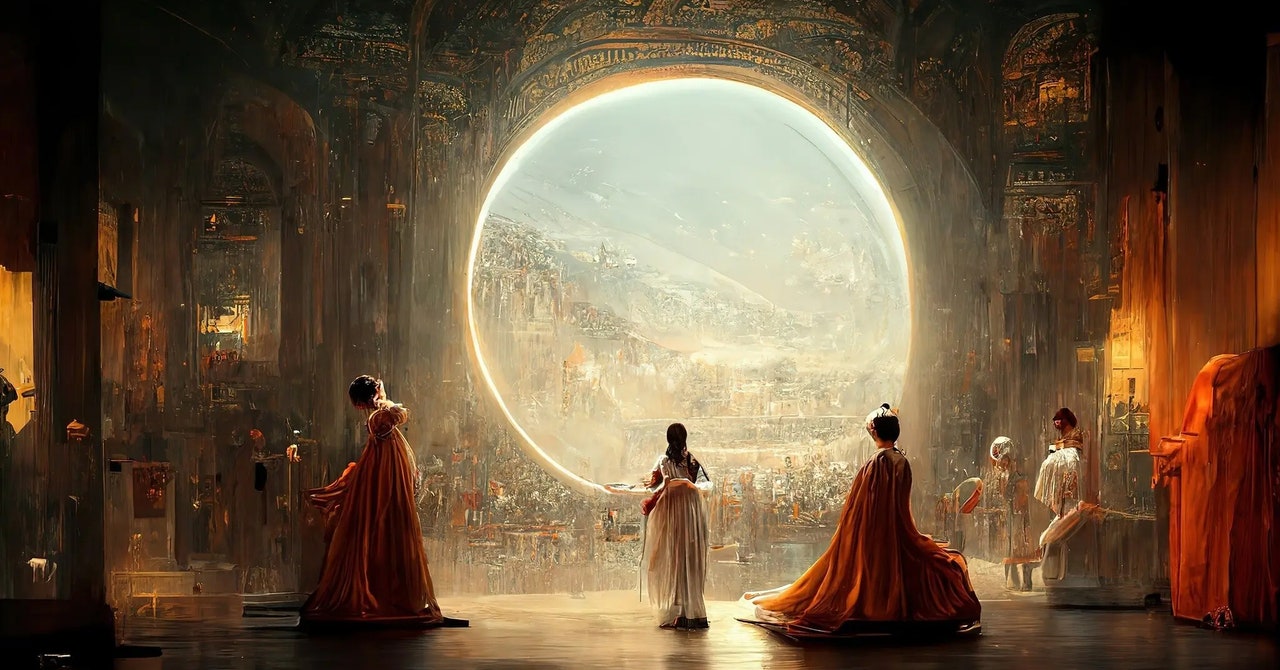- cross-posted to:
- imageai@sh.itjust.works
- technews@radiation.party
- cross-posted to:
- imageai@sh.itjust.works
- technews@radiation.party
Why This Award-Winning Piece of AI Art Can’t Be Copyrighted::Matthew Allen’s AI art won first prize at the Colorado State Fair. But the US government has ruled it can’t be copyrighted because it’s too much “machine” and not enough “human.”



Off topic but anyone know if you can download this art in high-res from somewhere?
https://media.wired.com/photos/64f8c8a43e1a7b4810e35753/master//AI-Copyright-Théâtre_d’Opéra_Spatial-Culture.jpg
This is an amazing piece, regardless what I think about the AI art shitshow in general.
It’s a lovely piece, created by nobody.
It’s like how you can look at and appreciate a beautiful cloud or leaf or rock formation which exists in the world without meaningful human expression, but you can’t copyright it or otherwise claim to be its creator or exclusive owner.
…or it’s created by literally everybody. If the AI is trained on public data I’m not sure how we can claim “nobody” created it.
“everybody” and “nobody” pretty much means the same thing in the eye of law in this context
If it is “everybody”, then it follows common law and is public domain. If it is “nobody”, then it is abandonware.
Created by the artist. An artist using AI is no different than an artist using AfterEffects or other processing medium. Using your example, it’s essentially saying “Earth” made a beautiful picture and not the cameraman.
Without the human element manipulating the AI, the AI is presently worthless. If we ever create AGI that can create art on its own, then we have a real discussion on our hands.
Luddites who are mad that AI is beginning to show promise can hate all they want, but this is the reality.
Hard disagree here, the modern western conception of art (around which the current legal and economic systems were constructed) is really opposite to the idea that the current AI tools should deserve any copyright.
Why ? The concept of art (the modern western one) is that an Art piece is composed of :
The idea can be given by others, to be constructed by an artist. That is usually a Patron (from where Patreon invented its name) , in spanish Mecenas, that pays the work and directs what idea and even general form it will take (the social practice is called Mecenazgo in spanish, since english has no equivalent word, i will use that ). Example: The Sistine Chapel, which was conceptualized (and paid) by the Catholic Church, including themes and general style, and was given to italian artists like Michelangelo to give the final form, which they drew themselves, with the approval of the church authorities at the end.
The current Ai tools work exacly like the Mecenazgo:
The current copyright legal and economic system gives the intellectual property to the ARTIST, that made the step 2, and NOT to the Mecenas of the step 1. Because the Mecenas only had ideas, and the one who made what is considered artistic work, that deserves the legal privilege of IP, is the artist. If all someone did was tell the AI what to draw (i.e. gave an idea, general theme and general form), then the person is only acting as the Mecenas. The MACHINE is doing the artistic work, and since the machine is not a human that deserves the legal privilege, ir should be considered non copyrighted or public domain, just like the picture some monkey took of itself some years ago.
This was not always nor everywhere the social interpretation of WHO is the agent that actually made the art. Before the Renaissance, the western societies considered the Mecenas of step 1 the TRUE ARTIST, because he-she had the idea, and the person that gave form to the idea was considered a low level construction worker like stonemasons, that did not even have its name recorded. If you are wiilling to go back there, we would have to fundamentally change our interpretation of art , artists and rewrite the Sistine Chapel as created by the Catholic Church , and michelangelo is irrelevant.
A fair take, if one I have a few caveats with. I would contend that AI artists, should such a thing truly emerge, are explicitly experts in pulling art from an AI that a layman cannot accomplish.
That being said, again, it is a fair take, and certainly influenced the copyright judgment.
Not off topic…